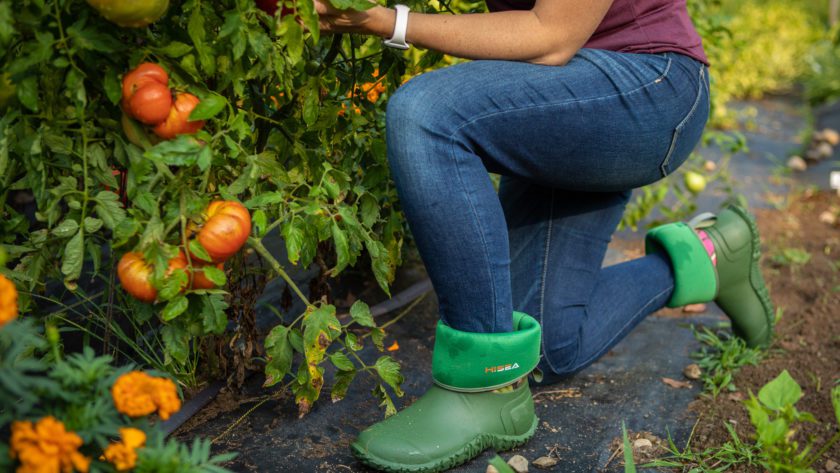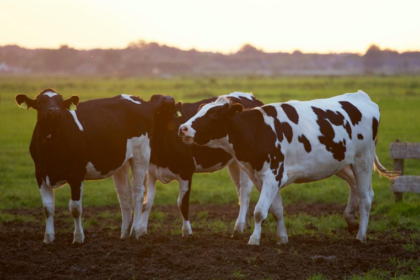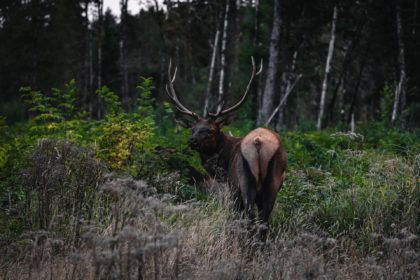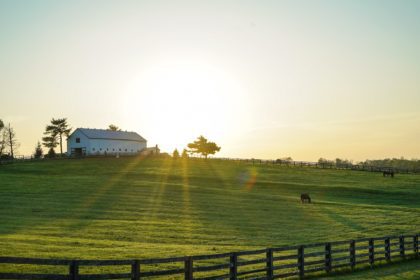We show our plants love by pouring water on them regularly but we often do more harm than good with the watering can. More plants die from being over-watered than from being under-watered.
All plants need water to thrive but it’s much less than we think and incorrect watering techniques puts them at risk for disease. Read on to learn the best way to water, the right time to water, and the basic equipment you will need to make gardening a better experience for both you and the plants.
How To Water
The water needs to reach the plant roots so the best way to apply water is at the base of the plant. Never water from overhead because this will get the plant foliage wet and create an environment for fungi, mold, and bacteria to grow.
Water deeply to encourage the plant roots to grow deep into the soil. Shallow watering discourages deep root growth and makes the plant less able to withstand drought and heat.
Plants grown directly in the ground will need about 1 inch of water each week. The plants will need 2 inches of water during the hottest part of summer.
Watering Container Plants
Container-grown plants will need to be watered daily. If they are grown in black pots they may need to water twice a day since black absorbs heat. Make sure the containers have plenty of drainage holes in the bottom to allow the excess water to drain through quickly.
Adding a layer of organic mulch on top of the container soil will help the soil retain moisture and remain cooler.

When To Water
Always water in the morning before the sun shines on the plants. Not only will a lot of water be lost through evaporation if the sun is shining on the plant but plants are better able to uptake the water in the early morning.
The dew will still be on the grass and plants and good pair of garden boots that are waterproof and slip resistant are essential. Invest in a pair of comfortable, stylish, affordable garden boots like HISEA that will keep your feet dry and safe while you’re outside doing gardening chores. The HISEA brand comes with a 100-year warranty so they will last forever and are ideal for wearing while doing all types of outdoor chores.
Watering Equipment
●Watering Can – A watering can is one of the most essential tools gardeners should have in their arsenal. This tool can water small plants such as tomatoes and peppers. If you want to water larger plants, consider using a sprinkler instead of a watering can.
●Garden Boots – These boots are made to get dirty, so make sure they’re easy to clean, as you probably don’t want to track dirt all over the house. The best footwear for gardening is HISEA boots because they provide better traction than regular shoes while still offering protection against thorns and other sharp objects found in gardens. You will also be able to walk farther without getting tired if you wear these boots while gardening since they are designed for comfort and protection from injury due to sharp objects. These HISEA garden boots made of rubber and neoprene are waterproof and weather-resistant

Moisture Check
Overwatering is a common cause of plant death. Check the soil moisture before watering the plants to prevent drowning them. A simple way to do this is to keep a small wooden dowel handy. Insert the end of the dowel into the soil 2-3 inches and pull it out. Moist soil will stick to the dowel and indicates watering is not needed. If the dowel comes out clean, the soil is dry, and water is necessary.
A rain gauge located near the garden will help determine how much rain has fallen during the week. If it’s less than 1 inch, it’s time to water the garden.
A moisture gauge is good for use in a container garden or houseplants. A moisture gauge is inserted into the container and left there so you can tell at a glance if the plant needs water.





